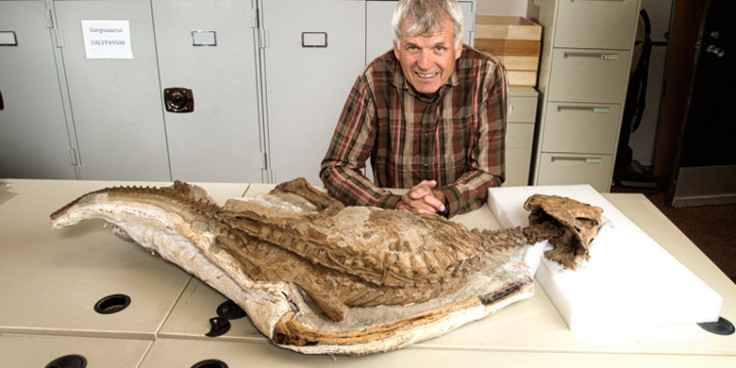Rare Baby Chasmosaurus Dinosaur Fossil To Be Used As A Teaching Tool In ‘Dino 101’
A rare fossil of a near-complete skeleton of a three-year-old Chasmosaurus belli is being hailed as an “once-in-a-lifetime” find and the public will get a chance to go in-depth with the discovery in an online course.

Paleontologist Philip Currie, from the University of Alberta, made the discovery in 2010 in the Canadian Badlands in Alberta, a “fossil hotbed” and home to Dinosaur Provincial Park, a UNESCO World Heritage Site. It was the first time a baby Chamosaurus, a relative of the triceratops, fossil was ever found, notes the university. The Chamosaurus roamed North America during the Late Cretaceous epoch, around 72 million years ago.
The fossil is 1.5 meters, just under five feet, and the skeleton is only missing its arms but otherwise intact. The fossil is a part of the university’s Laboratory for Vertebrate Paleontology collection, which includes more than 50,000 specimens that is open to the public and serves as an important research facility for students and paleontologists.
The baby dinosaur fossil can be used to gain new insights on Chamosaurus development, as adult fossils have also been found at Dinosaur Provincial Park. “It’s an opportunity to learn something about a dinosaur that has broader implications for the whole scientific community worldwide,” Currie said in a statement.
The university said researchers can learn about the dinosaur’s weight gain as it ages, skin-tissue development, bone development and more.
Currie will lead the “Dino 101” online course in January, which will include an in-depth look at the baby Chasmosaurus fossil. The course is free and open to the public, registration is underway and runs for 12 weeks. One part of the course will focus on the frill, ridged horn adornment, and its possible use in courtship.
“They are things that are not so important and much smaller in the babies, but in a large sexually mature animal develop into these very bizarre structures,” Currie said.
Other topics covered will include dinosaur anatomy, eating habits, evolution as well as attack and defense behaviors of dinosaurs.
© Copyright IBTimes 2024. All rights reserved.












